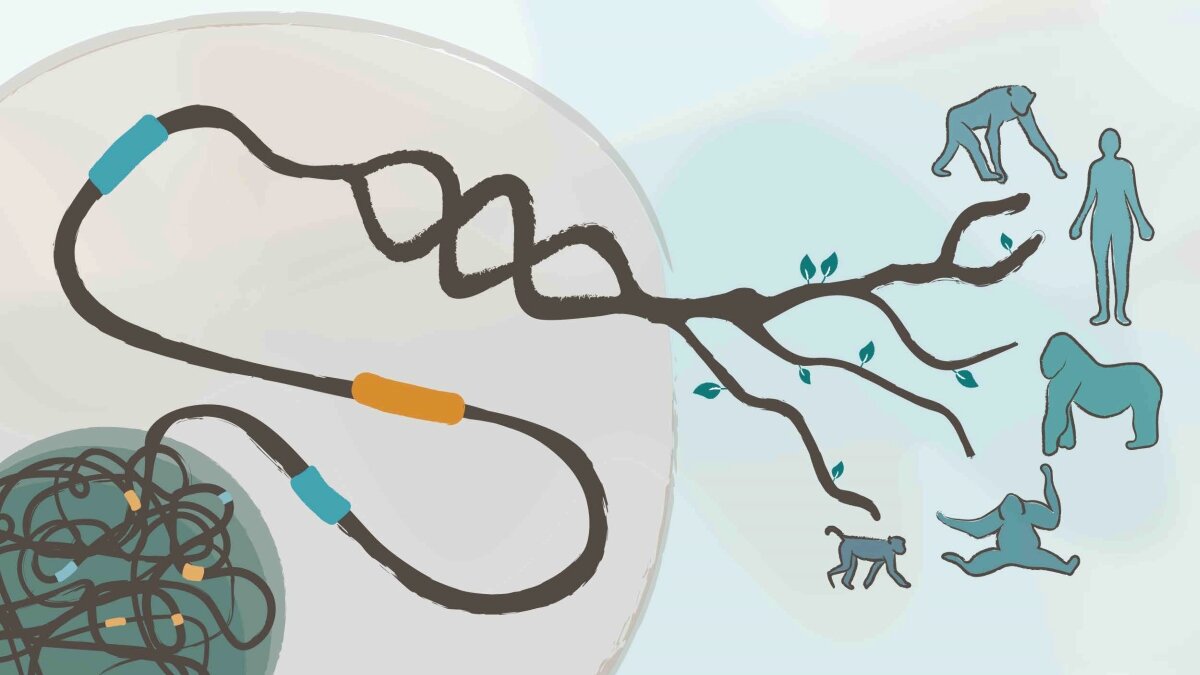#Regulatory elements that are directly involved in human neuronal brain functions

“#Regulatory elements that are directly involved in human neuronal brain functions”

Although each organism has a unique genome, a single gene sequence, each individual has many epigenomes. An epigenome consists of chemical compounds and proteins that can bind to DNA and regulate gene action, either by activating or deactivating them or producing organ- or tissue-specific proteins. As it is a highly dynamic material, it can provide a large amount of information to shed light on the evolution of the various tissues and organs that make up the body.
Now, a team from the Institute of Evolutionary Biology (IBE), a joint center of the Spanish National Research Council (CSIC) and Pompeu Fabra University, has carried out the largest study to date on the regulatory elements in the genome of primates. The exhaustive analysis conducted by the research team led by Tomas Marquès-Bonet, principal investigator of the Comparative Genomics research group at the IBE, has analyzed a wide spectrum of signals regulating genes in the great apes and in humans, including weak activity signals that have been overlooked in previous studies. The study, co-led by the researcher David Juan of the IBE, has revealed that in humans, the weakest regulatory signals, which are not usually studied, play an important role in the regulation of genes linked to brain. The research opens the door to deciphering the impact that these signals may have on the evolution of humans and other primates.
The research lab has carried out the largest study to date on the regulatory elements in the genome of primates.
The research team used high resolution to analyze epigenomic signals in cell lines of great apes and humans. In particular, the research provides new epigenomic data for four species of great apes and other primates: chimpanzees, gorillas, orangutans and macaques.
“In the study we used lymphoblastoid cell lines from humans and other primates because they provide a solid foundation as a model. Then we compared epigenomic signals between the different species, including the weakest activity signals in our analysis,” comments Raquel García, a Ph.D. with the Comparative Genomics group of the IBE and first author of the article.
“When we focused on detecting those specific characteristics of humans in the weakest epigenomic signals, we saw that they are related to brain functions,” explains Paula Esteller, a Ph.D. student with Marquès-Bonet’s group and study co-author. “This opens the door to studying the role of weak epigenomic signals in depth, as they may play an important role in various organs of humans and of other primates.”
The study includes weak epigenomic signals, usually ignored, and it has been seen that in humans they are related to brain functions.
The study, carried out using lymphoblastoid cells, which are easily accessible and easy to culture, suggests that this model could provide information on other more inaccessible tissues, such as the brain. The research could help understand how primates’ cells are regulated and which of these mechanisms have been conserved over the course of evolution. The study also provides a comprehensive resource of genomic and epigenomic data on primates that are made available to the entire scientific community.
The genome of chimpanzees and gorillas could help to better understand human tumors
Raquel García-Pérez et al, Epigenomic profiling of primate lymphoblastoid cell lines reveals the evolutionary patterns of epigenetic activities in gene regulatory architectures, Nature Communications (2021). DOI: 10.1038/s41467-021-23397-1
Provided by
Universitat Pompeu Fabra – Barcelona
Citation:
When small epigenomic signals matter: Regulatory elements that are directly involved in human neuronal brain functions (2021, June 16)
retrieved 17 June 2021
from https://phys.org/news/2021-06-small-epigenomic-regulatory-elements-involved.html
This document is subject to copyright. Apart from any fair dealing for the purpose of private study or research, no
part may be reproduced without the written permission. The content is provided for information purposes only.
If you liked the article, do not forget to share it with your friends. Follow us on Google News too, click on the star and choose us from your favorites.
For forums sites go to Forum.BuradaBiliyorum.Com
If you want to read more Like this articles, you can visit our Science category.




